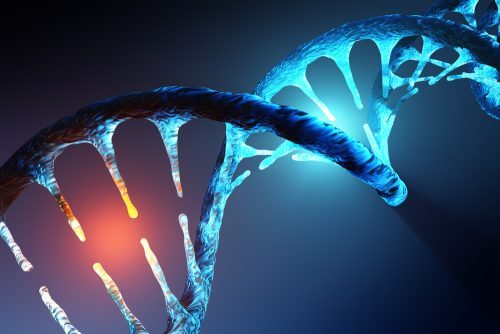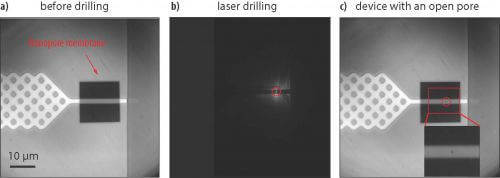The technology was developed at the Faculty of Biomedical Engineering at the Technion

Researchers at the Faculty of Biomedical Engineering at the Technion have developed a new technology that enables the analysis, at the single molecule level, of extremely long genomic DNA strands. Such an analysis is essential for an accurate characterization of the DNA molecules, and will lead in the future to the identification of diseases based on changes in the sequence of individual DNA molecules. The research published in the article in the journal ACS NANO was led by Prof. Amit Meler, PhD student Adam Zarihan and the director of Meler's laboratory Dr. Diana Hutner.
The system developed by the Technion researchers contains a system of microscopic channels that allow controlled stretching of individual DNA strands and their transport to a nanometer porous sensor. It is a tiny hole drilled in a thin silicon membrane using a focused laser beam, and its diameter is 10,000 times smaller than the diameter of a human hair. When the DNA strand is threaded into the pore, it is pulled by an electrical voltage that moves it from one side of the membrane to the other. This passage enables scanning of the DNA structure along the strand and provides important information about its genetic characteristics.

The technology for the transfer of single molecules in a porous sensor was developed by Prof. Meller in the past, and now it has been adapted in favor of such "treatment" of extremely long genomic DNA strands. These are strands produced directly from human cells and contain hundreds of thousands of base pairs.
Transporting long strands through a nanometer pore is a complex technological challenge, because such biomolecules tend to assume a tangled coil shape, in which the ends are hidden. In this situation, finding one of the ends and threading it into the tiny hole is similar to finding the end of a thread in a tangled ball of long sewing thread and threading it into the eye of a needle.
According to Prof. Meller, the device will lead to a dramatic improvement in the ability of the scientific community to characterize the properties of genomic DNA and identify changes in its sequence and proteins related to it at key points that affect the biological function of the cell. In the future, such technologies will also be used to identify, at the level of a single DNA molecule, genetic variations related to the onset of diseases, and to diagnose them based on tiny samples.
The research was conducted by the research team of Prof. Amit Meller from the Faculty of Biomedical Engineering, the Interdisciplinary Program for Nanosciences and the Lockey Center for Life Sciences and Engineering at the Technion, and was supported by grants from the European Research Commission (ERC) and the i-Core program of the Israel Science Foundation.
